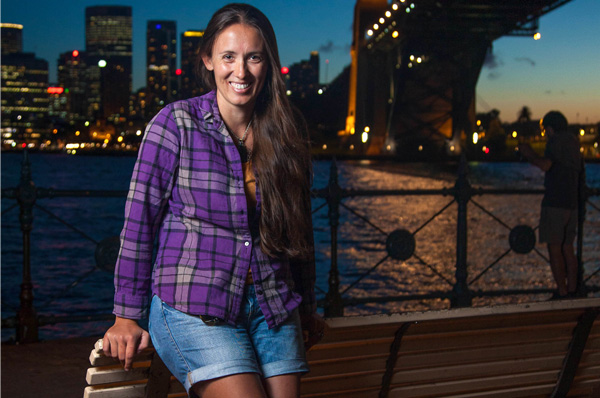Being an adventure photographer is about going to the ends of the earth, whether it’s high in the sky to deep in the ocean, all with the aim of capturing people doing extraordinary things – often in some of the most remote places on Earth. It is through this shared passion that I met Krystle Wright. For Krystle, photography has taken her from working at a local paper on the Sunshine Coast to becoming a sought-after commercial photographer and filmmaker. More recently, Canon Australia recognised Krystle’s achievements by anointing her as a ‘Canon Master’. Having now spoken with Krystle on multiple occasions, I feel I’ve been granted a new perspective on what it takes to be a great photographer. And it’s certainly not a simple case of point-and-shoot.
“I have no idea how long I was blacked out for, From the moment of impact to when I remember waking up, I knew that potentially a couple minutes had passed.” Krystle recounts the terrifying moment that nearly put and end to her career – and life – while working in Pakistan in 2011. “The lead up happened so fast, but I remember it all up until the point when I collided with the rocks.”
At the age of 24, Krystle had been commissioned to photograph a paragliding record attempt in the Karakorum Range in North Pakistan. While making to take off from a steep slope, Krystle got caught in a cross-wind and was smashed into the ravine below as a result. She came to some minutes later to find that not only were all her cameras broken, but that she had also sustained injuries to her entire body,
“All I could do was sit and be patient as a stretcher was sent up from the nearby village,” she recalls. “I had to become good at being patient as it took a total of 12 hours from the time of the accident to the time I reached the military hospital in Skardu.”
While the accident in remote Pakistan certainly tested Krystle’s mettle, her journey into the world of photography wasn’t quite as intrepid. Her first experience was gained during her time at university, where Krystle began working for a local daily newspaper. However, the job gave Krystle a taste of what it was like to be a working photographer.
“The Sunshine Coast Daily was a great start to my career,” she says. “By introducing me to how the system works and providing valuable practical experience, I got to the point where I was able to begin working some shifts with the Sunday Mail and the Courier Mail. I owe it to the Sunshine Coast Daily for giving me my start in the industry and teaching me the ropes.”
From that point, Krystle found work as a casual photographer for the Sunday Telegraph and as a stringer for Agence France-Presse, but her career working for newspapers would come to a halt as a result of her accident in Pakistan. Not only did the time spent convalescing cause her to reevaluate her path, it also yielded a chance phone call that would cause her future to take on a new shape…
…get the full account in Wild issue 145.
You can also see examples of Krystle’s photography by visiting her website.


